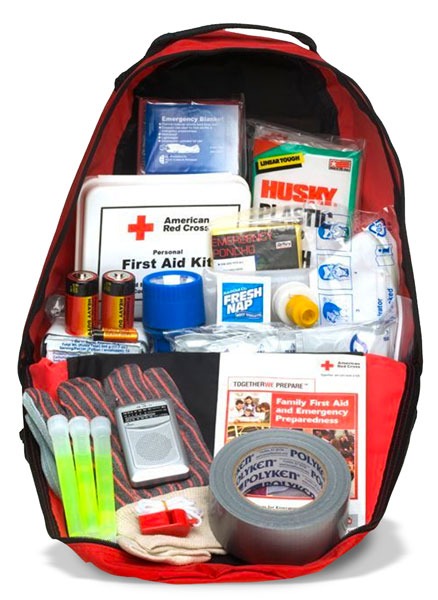Await Anything: Emergency Preparedness Tips for every single Scenario
Await Anything: Emergency Preparedness Tips for every single Scenario
Blog Article
How to Establish a Comprehensive Emergency Situation Preparedness Plan
In the world of readiness, establishing a thorough emergency situation plan is not simply a job to check off a list; it is an important cornerstone of any kind of organization or individual's strength method. By thoroughly crafting a plan that deals with numerous aspects of emergency monitoring, including risk evaluation, interaction protocols, source allotment, and tactical decision-making, one can lay a strong foundation for safeguarding lives, possessions, and operations.
Relevance of Emergency Readiness
Emergency preparedness is important for mitigating possible risks and ensuring the safety and security of communities and people. In today's globe, where all-natural catastrophes, public wellness crises, and other emergencies can strike without caution, being prepared can make a considerable distinction in reducing the effect of these events. By having a well-balanced emergency situation readiness strategy in place, people and companies can respond properly, safeguard lives, and lower property damage.
One of the main factors why emergency preparedness is important is its role in saving lives. When emergency situations take place, having a strategy that lays out clear treatments for evacuation, interaction, and emergency action can aid individuals act promptly and emphatically. This can prevent injuries and casualties by ensuring that people know what actions to require to stay secure
Furthermore, emergency situation preparedness boosts the strength of neighborhoods. By cultivating a society of readiness and preparation for numerous scenarios, areas can bounce back faster from disturbances and disasters. This resilience is vital for maintaining security, connection of procedures, and overall wellness in the face of difficulty.
Assessing Possible Dangers
Thinking about the relevance of being prepared for unanticipated occasions, the initial step in developing an efficient emergency situation readiness strategy includes completely assessing and evaluating prospective dangers. This assessment requires a thorough evaluation of all feasible dangers that can influence the organization, taking into consideration factors such as area, sector, and historical data on occurrences. By recognizing these dangers, organizations can prioritize their readiness initiatives and designate resources successfully to mitigate the most considerable threats.
Usual threats that organizations may deal with consist of natural calamities like quakes, floods, or cyclones, technical dangers such as power blackouts or data violations, along with human-caused threats like mishaps or intentional acts of physical violence. Conducting a danger analysis also includes thinking about the possible influence of these events on the company's procedures, staff members, clients, and track record. By conducting a detailed danger evaluation, organizations can create tailored emergency reaction strategies that address their specific vulnerabilities and guarantee effective readiness for any kind of potential situation.
Developing an Interaction Plan
Establishing a extensive and clear communication plan is essential for efficient emergency readiness within organizations. In times of dilemma, communication plays a critical function in guaranteeing the security and well-being of workers, stakeholders, and the area. A well-thought-out communication strategy ought to lay out advice clear lines of interaction, designate key employees accountable for interaction tasks, and establish procedures for distributing info quickly and precisely.
One trick aspect of producing an interaction plan is identifying alternate and key interaction networks (EMERGENCY PREPAREDNESS). These can consist of e-mail, message messaging, phone trees, social media systems, and public address systems. It is crucial to guarantee that these channels are trusted, accessible, and on a regular basis examined to guarantee their efficiency throughout emergency situations

Building an Emergency Set
Offered the essential relevance of preparedness in times of situation, a crucial component that organizations must address is the facility of an emergency situation set. When putting together an emergency situation set, it is important to think about the details requirements and circumstances of the company. In addition, organizations ought to include crucial papers, such as get in touch with lists, insurance policy info, and emergency action strategies, in water resistant containers within the package.
Establishing Discharge Procedures
To ensure the safety and security and organized emptying of personnel during emergencies, companies must develop clear and effective discharge treatments. Evacuation procedures must incorporate a variety of possible circumstances, including fires, natural calamities, or other emergencies that need quick discharge.

Additionally, companies ought to develop a system for accountancy for all personnel during an emptying to ensure that every person has securely left the facilities. Communication plays a vital function in emptying procedures, with clear guidelines on how to evacuate and when to do so. Regular testimonial and updating of emptying treatments based upon feedback and altering situations are essential to maintaining the effectiveness of the strategy.
Verdict
Finally, developing a thorough emergency preparedness plan is vital for making certain the security and wellness of individuals in case of a disaster (EMERGENCY PREPAREDNESS). By examining possible threats, developing an interaction plan, developing an emergency situation set, and establishing emptying people, companies and treatments can be better geared up to respond successfully to emergencies. It is very important to prioritize preparedness initiatives to minimize the effect of catastrophes and safeguard lives and residential or commercial property
In the realm of readiness, creating a comprehensive emergency situation strategy is not simply a job to check off a checklist; it is an essential keystone of any company or individual's resilience strategy. When emergencies take place, having a plan that outlines clear procedures for emptying, communication, and emergency situation reaction can aid people act swiftly and emphatically. Visit Website. By conducting a complete threat assessment, organizations can develop customized emergency situation reaction plans that address their certain susceptabilities and make sure efficient readiness for any type of possible dilemma
Creating a extensive and clear communication plan is crucial for effective emergency readiness within organizations. By examining prospective dangers, producing a communication plan, constructing an emergency situation set, and establishing emptying organizations, procedures and people can be much better outfitted to react successfully to emergencies.
Report this page